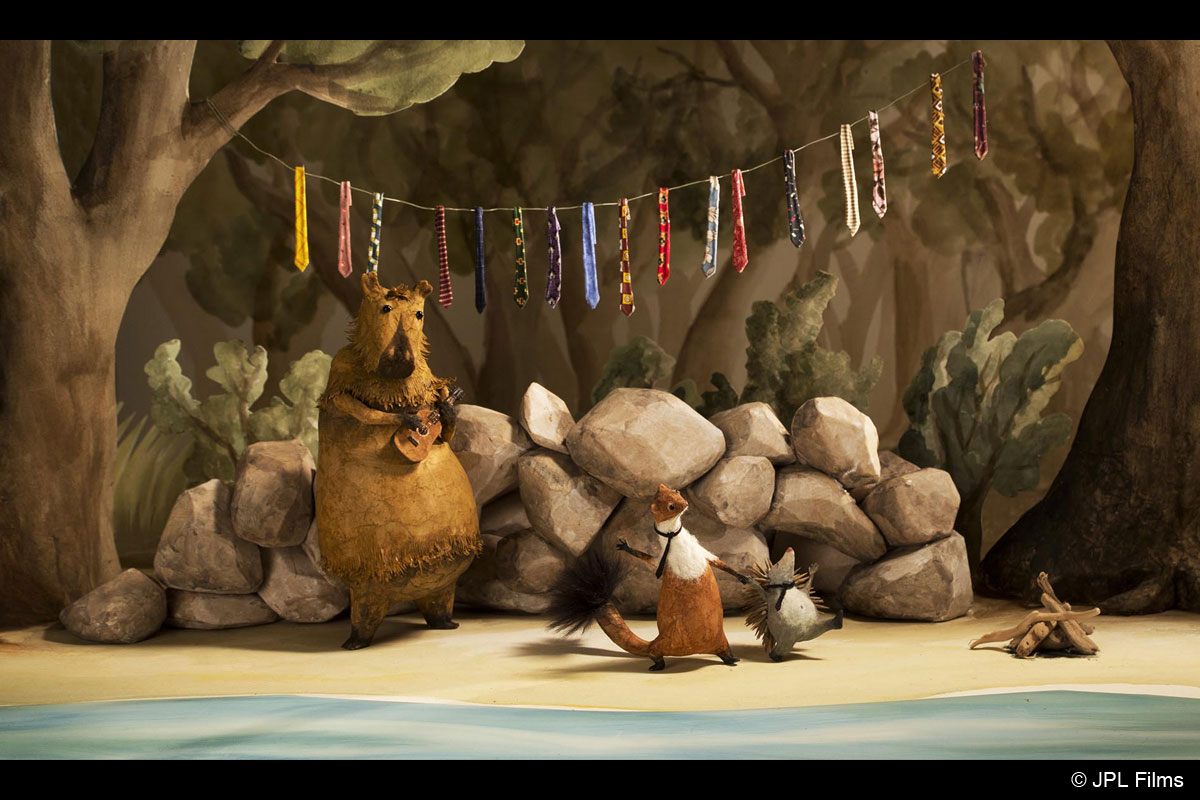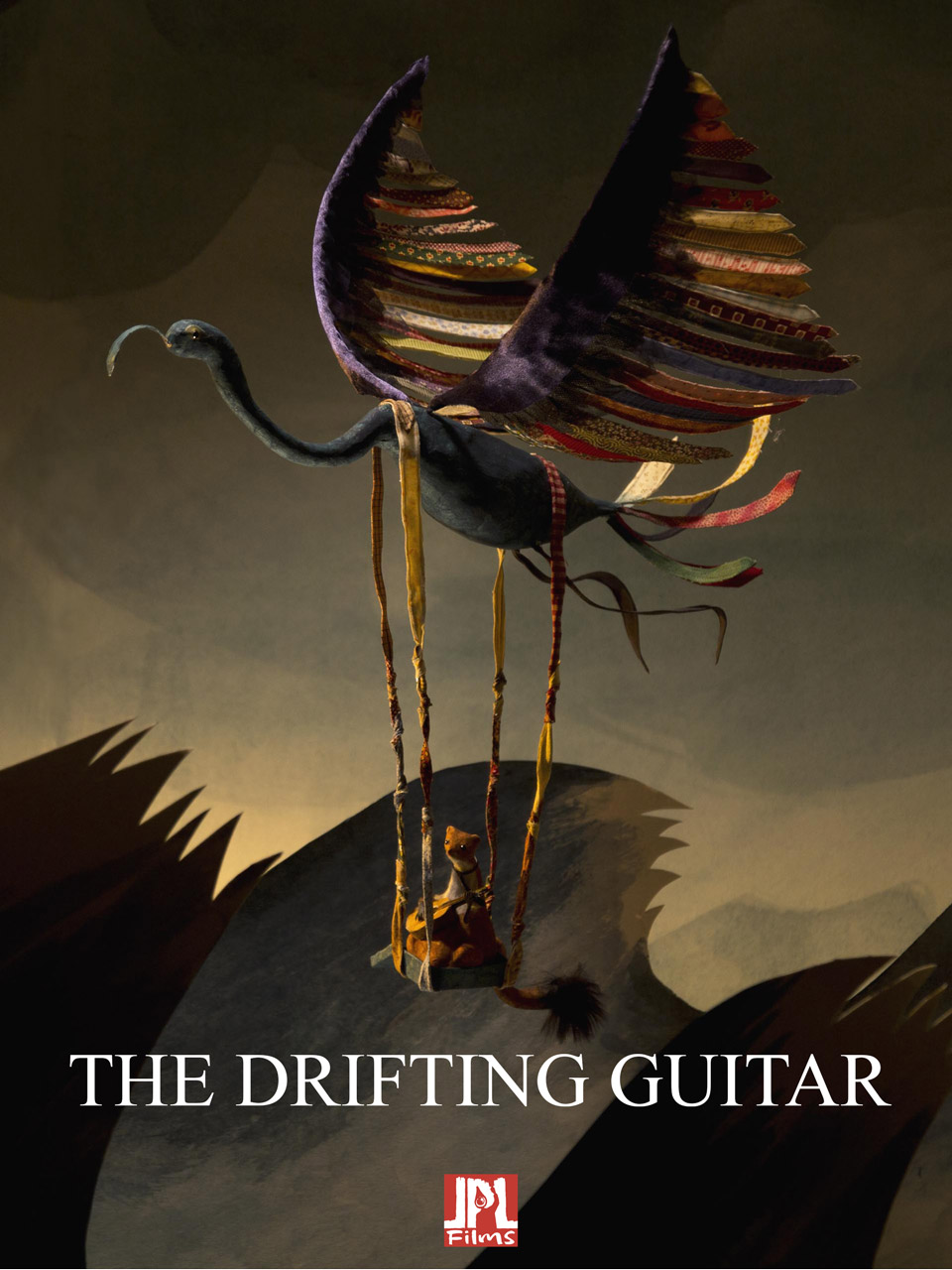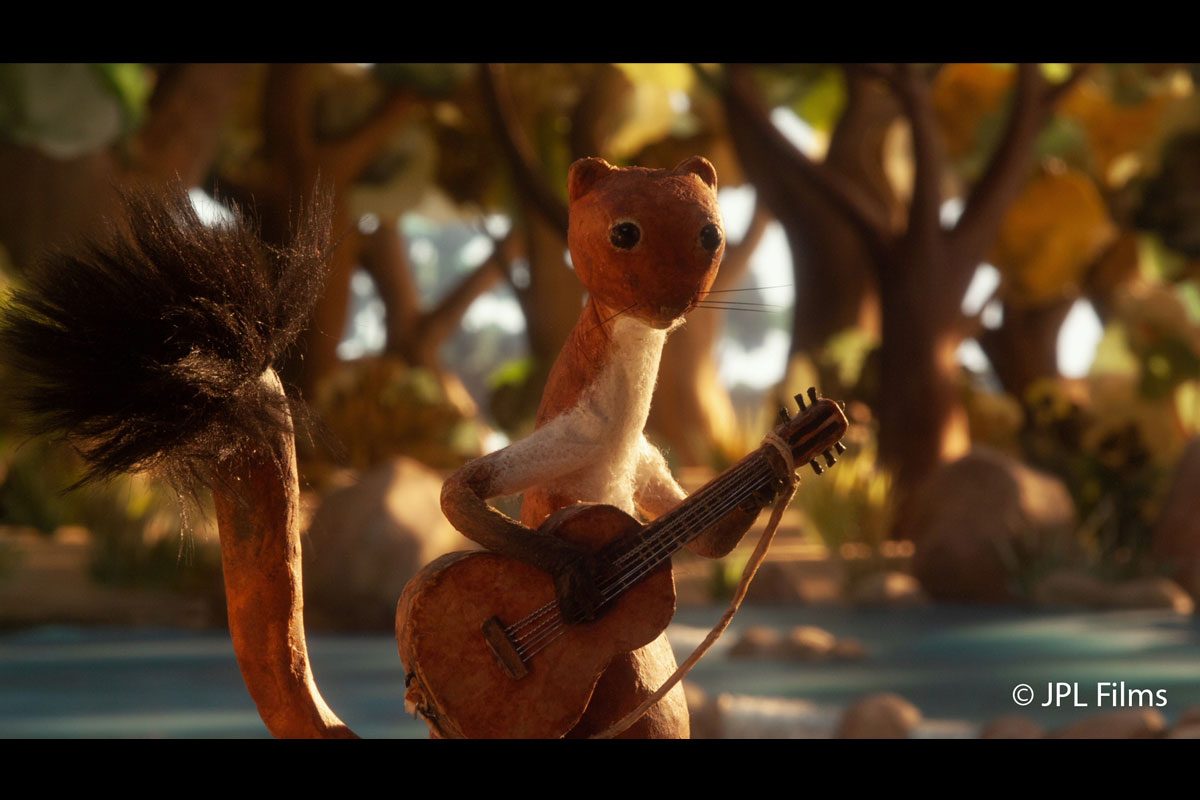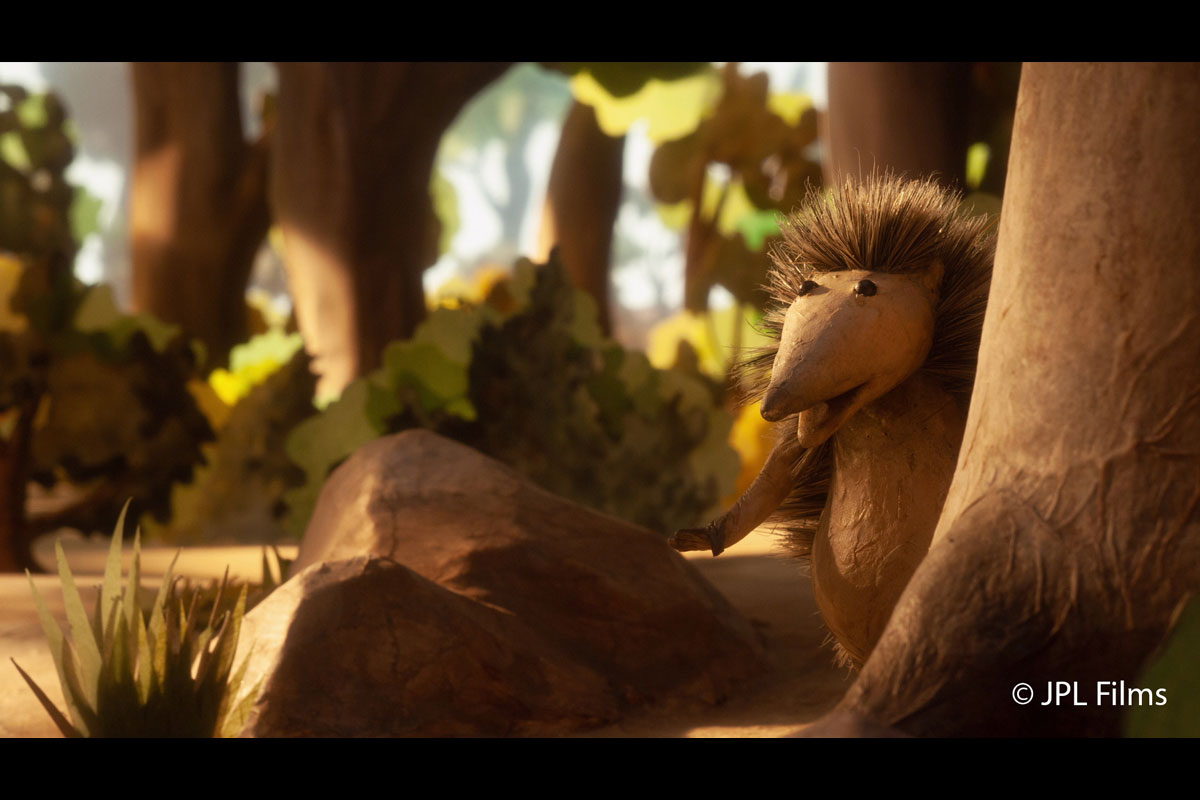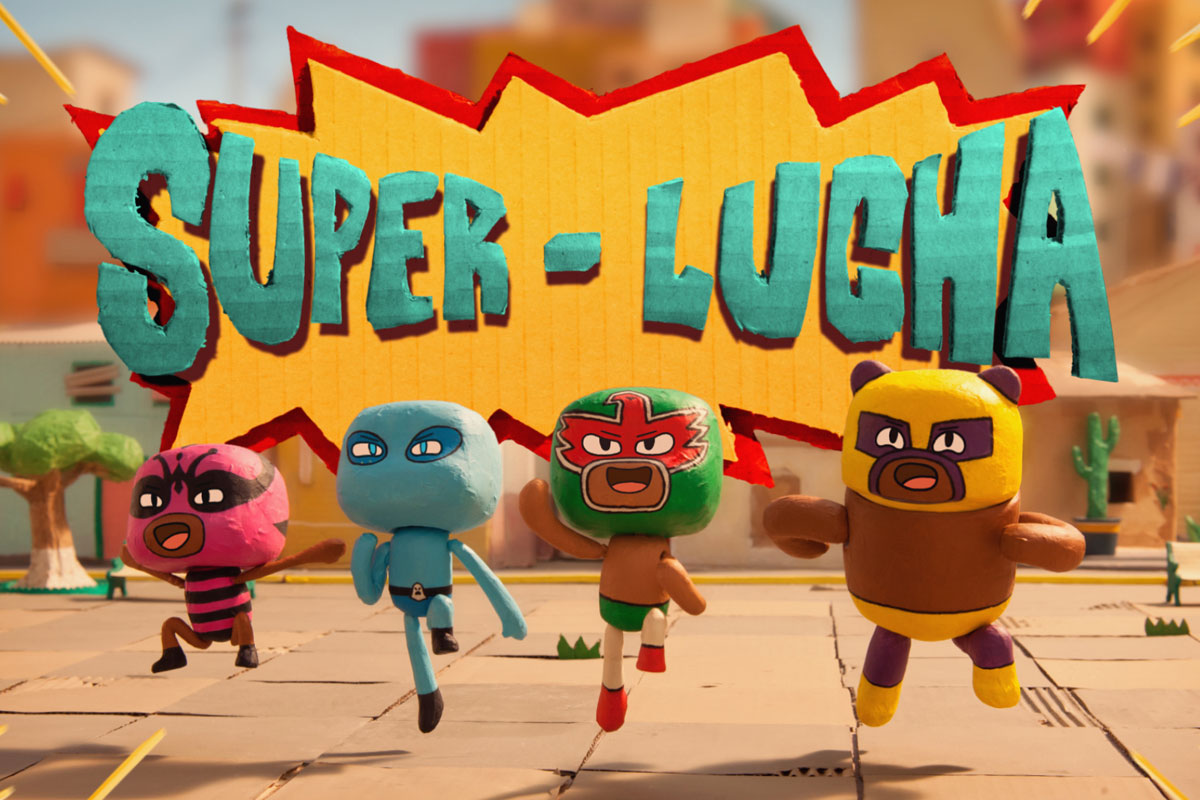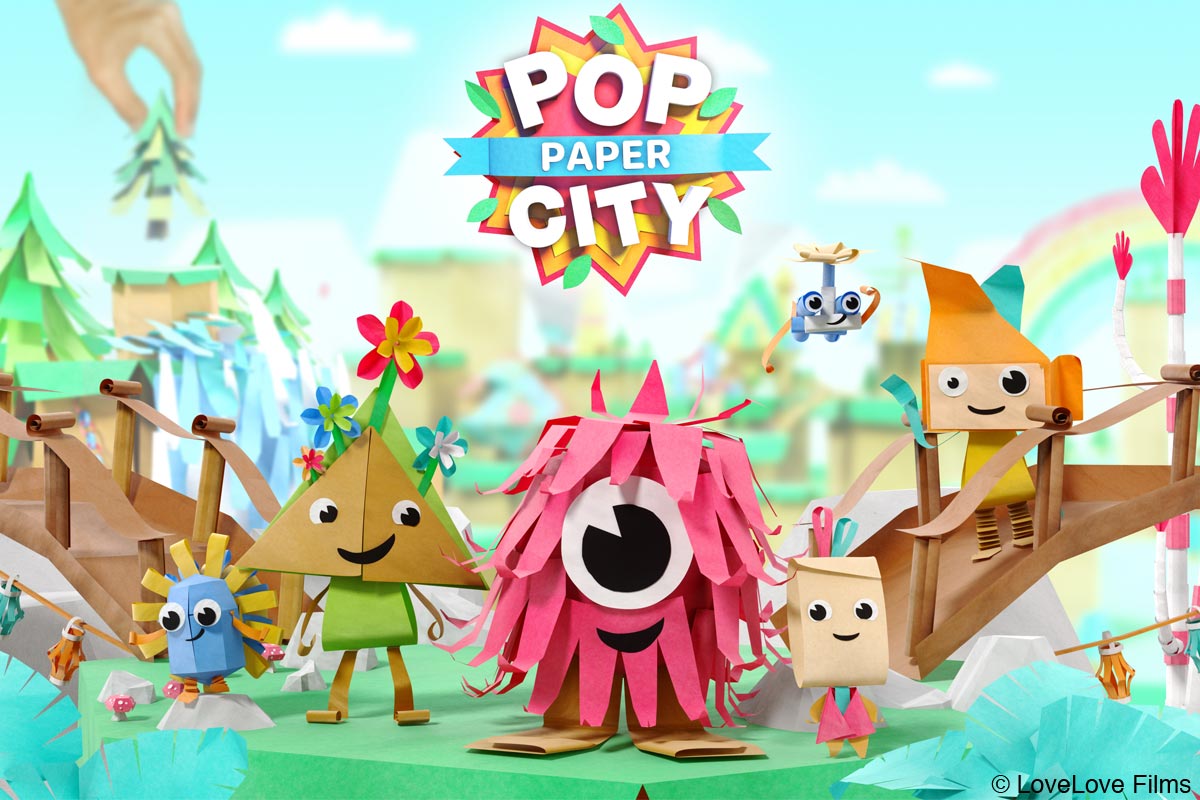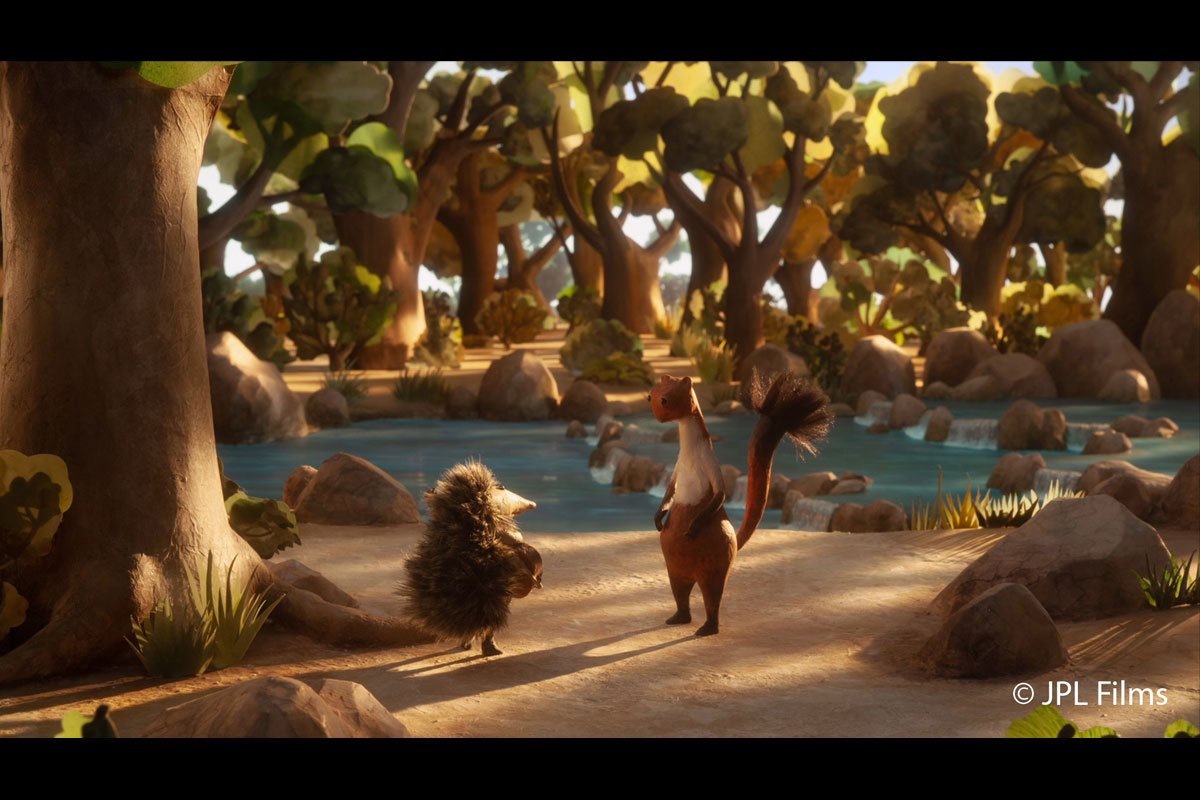
Synopsis
A stone marten, whose absurd job consists in selling ties door to door across the countryside, is considered as a “pest” and is perpetually roaming from one place to another. She decides to try her luck in the forest, where her fate takes a new turn thanks to the unconditional help of a hedgehog. The arrival of a third character, a capybara who has lost his home and his roots for what we suppose to be climatic reasons, will lead the stone marten in turn towards the process of helping others, and finally allow her to discover her true place.
The Drifting Guitar
Director, author: Sophie Roze
Producers: Jean-Francois Bigot (JPL Films, France) and Camille Raulo (JPL Films, France)
Format: TV special – 26′
Target audience: Family
Technique: Stop-motion
The Drifting Guitar is a new stop-motion animation project by Sophie Roze, who is also known as the director of animated shorts Josephs’ Snails (2009), The Whale Bird (2011) and Snow (2014). Sophie teamed up with JPL Films for the new title, being the second time for them to work together after Josephs’ Snails.
At Cartoon Forum 2020, the team presented the project of her new tale of adorable but independent animal characters, guided by music, in a mysterious forest. The trailer was revealed at the event introducing two characters among the several key animal characters, a stone marten and a hedgehog, in a forest with warm sunlight.
Here, we would like to present our special interview on the awaiting project with Sophie.
Interview with Sophie Roze
Hideki Nagaishi (HN): Could you please let us know the key points of this animation project that you would like to appeal to the prospective audience?
Sophie Roze: The film is a tragic-comedy, with burlesque and poetic notes. The comic element emanates essentially from the relations between the different characters. Apart from combining human characteristics with the specificities of the animal concerned, at the same time each of them has their own particular character. This creates scenes which I hope are funny and moving.
I would like certain scenes to be essentially dreamlike. The stone marten regularly has premonitory dreams which move the storyline along in an unexpected way. These dreams resemble musical refrains, verses of poetry which punctuate the story, “lighten” it, while at the same time carrying it forward.
HN: How did the project start? And where did the initial idea of the story come from?
Sophie Roze: The first inspiration for this project came to me as I was working on a piece of music for the guitar, an Argentinian milonga. A milonga is a popular Argentinian melody which couples dance to, somewhat similar to tango. As I continued playing, I could see this little stone marten floating about with her little suitcase in her hand. The idea of a little stone marten is directly linked to my childhood: a photo of a stone marten used to hang on my bedroom wall, and one of my father’s favourite games was to ask me the name of the animal. I invariably answered “C’est la ‘tite fuine’” (“It’s the ickle sto’ marten”), which made him smile. So from then on I was known as “la petite fouine”, until my father died as I was entering adulthood. To honor my father and my childhood memories, I decided to put this character at the center of an animated film I would make.
HN: What kind of message or experience do you want to deliver to the audience through the story? And what do you take care in the most when developing the story?
Sophie Roze: The film tackles the themes of losing one’s roots, of the difficulty in finding one’s place in the world, and of mutual assistance. The stone marten character encounters all these themes. Her absurd job consists in selling ties door-to-door across the countryside. She is considered as a “pest” and is perpetually roaming from one place to another. She decides to try her luck in the forest, where her fate takes a new turn thanks to the unconditional help of a hedgehog.
The arrival of a third character, a capybara who has lost his home and his roots for what we suppose to be climatic reasons, will lead the stone marten in turn towards the process of helping others, and finally allow her to discover her true place. The theme of nature is also primordial in the film. I would like to try to present the beauty of nature through the film’s decors: the forest, the river, the mountains. I want to show its majesty and strength, and at the same time its extreme vulnerability. Thus, the storm scene in the Argentinian forest would highlight this fragility and the tragic notion of climate change.
HN: We would like to hear about the visual design. What is the most important characteristic of the visual design of the characters and universe for the story, and why?
Sophie Roze: These wild animals live in a natural world where I wish to highlight on the decors, proposing a particularly deep focus on them. Elements closest to the camera will have volume, covered in paper and watercolor. Further out in the distance, decors will be made of vertically-placed pieces of flat paper. I would like to pay particular attention to the lighting on these elements in order to discreetly suggest the different atmospheres of the day. During my graphic research work, I have noticed that watercolor surfaces catch the light well, and that it is also interesting to include several blank zones. This avoids blocking up the image by giving an airy feel, with no excess material. I hope to be able to continue my work in this direction.

HN: You have told stories with different animation techniques. Could you please let us know why this time you decided to tell the story with stop-motion puppet animation? And what did you take care in the most when selecting the materials for each puppet?
Sophie Roze: I intend to create this film with volume (stop-motion) as I appreciate the relationship with space that this technique permits, as well as the “concrete” aspect of the puppet. The characters will be actual puppets with volume and textile touches, particularly for the stone marten’s white bib (she has a soft cotton fabric used around her neck) and the false-fur tip of her tail. The pin-head eyes will be shiny black, accentuating an enigmatic look. The hedgehog is a little ball ofbristles, made out of a broom. All these stop-motion puppets are made of latex foam, but they look like they have been made using papier mâché. This choice of supple material enables us to make the stone marten move in a fluid way.
HN: Could you please let us know the story behind the composition of music for the animation?
Sophie Roze: The Drifting Guitar is a project where music holds an essential place: Apart from the fact that it punctuates the film, like a refrain,it is directly thanks to music that relations are formed between the characters. In particular, it is the presence of a guitar from the very beginning of the film which makes contact between the characters possible. Listening to music leads them to listen to each other. It arouses their curiosity and brings them together. The pieces featuring in the film would all be from Brazilian and Argentinian repertoires, in order to strengthen the encounter between the stone marten and the capybara.


